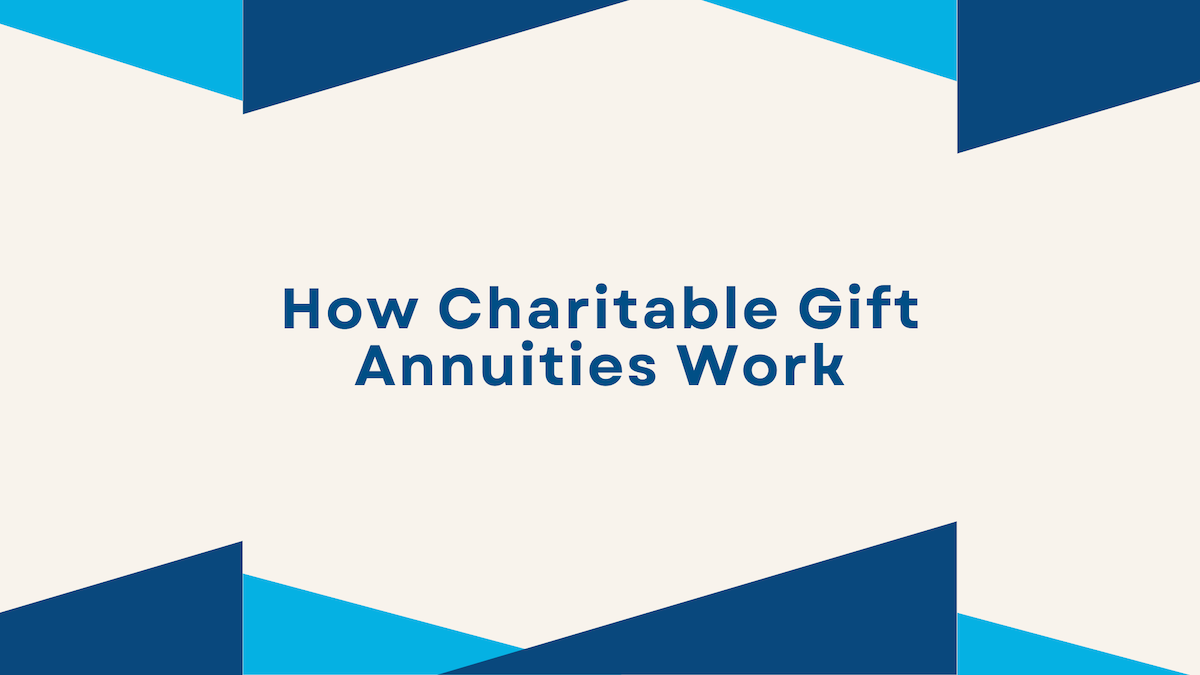Charitable Gift Annuities (CGA) are a unique philanthropic financial arrangement that allows individuals to donate to a charitable organization while receiving a fixed income stream for life. It is an agreement between a donor and a nonprofit where the donor contributes a lump sum, and in return, the charity pays a predetermined annual amount for the rest of the donor’s (or a beneficiary’s) life.
This structured giving method not only provides financial security to the donor but also supports charitable causes, making it a win-win for both parties.
Nonprofit Resources
The Charity Charge resource hub is dedicated to providing tips, tools, and information to help your nonprofit create and grow a modern organization. Learn more
How Charitable Gift Annuities Work
A CGA follows a simple process:
- Making the Donation – The donor contributes cash, stocks, or other assets to a nonprofit organization.
- Setting Payment Terms – The charity agrees to pay a fixed annuity amount based on the donor’s age and the size of the gift.
- Receiving Payments – The donor (or designated beneficiary) receives fixed payments for life, typically quarterly or annually.
- Supporting a Cause – After the donor’s passing, the remaining funds go to the charity to further its mission.
Nonprofit organizations calculate the annuity payments based on age and life expectancy, often following rates recommended by the American Council on Gift Annuities (ACGA). The older the donor, the higher the annuity payout since the expected payment period is shorter.
Benefits of Charitable Gift Annuities
Charitable gift annuities offer multiple financial and philanthropic advantages:
✅ Lifetime Income Security – Donors receive guaranteed payments for life, providing financial stability.
✅ Tax Benefits – A portion of the donation qualifies for an immediate charitable tax deduction, and part of the annuity income may be tax-free.
✅ Support a Meaningful Cause – Ensures that a nonprofit organization benefits from the remaining funds after the donor’s lifetime.
✅ Reduced Capital Gains Tax – When donating appreciated assets (e.g., stocks), donors can avoid or reduce capital gains taxes.
✅ Flexible Giving Options – Payments can be made to one or two individuals (e.g., spouses), and donors can choose immediate or deferred annuities.
Who Can Benefit from a CGA?
Charitable gift annuities are ideal for:
- Retirees looking for fixed income with the added benefit of philanthropy.
- Individuals with appreciated assets who want to minimize capital gains tax.
- Donors passionate about a cause and seeking to make a lasting impact.
- Estate planners aiming to balance charitable giving and financial security.
Types of Charitable Gift Annuities
There are several types of CGAs tailored to different donor preferences:
🔹 Immediate Payment CGA – Provides annuity payments starting right after the donation.
🔹 Deferred Payment CGA – Payments begin at a later date, allowing for higher future payouts and additional tax benefits.
🔹 Flexible Deferred CGA – Allows donors to choose when payments begin, offering flexibility in retirement planning.
Charitable Gift Annuities vs. Other Giving Strategies
| Feature | Charitable Gift Annuity | Charitable Remainder Trust | Donor-Advised Fund |
|---|---|---|---|
| Fixed Lifetime Income | ✅ Yes | ❌ No | ❌ No |
| Immediate Tax Deduction | ✅ Yes | ✅ Yes | ✅ Yes |
| Charity Receives Remainder | ✅ Yes | ✅ Yes | ✅ Yes |
| Donor Control Over Investments | ❌ No | ✅ Yes | ✅ Yes |
| Flexibility of Payout | ❌ Limited | ✅ High | ❌ Limited |
While charitable remainder trusts (CRTs) and donor-advised funds (DAFs) offer more flexibility in asset management, CGAs provide the unique benefit of fixed income for life.
Tax Considerations for CGAs
One of the most appealing aspects of charitable gift annuities is their tax advantages:
- Charitable Deduction – The donor can claim an income tax deduction based on the gift’s present value.
- Partially Tax-Free Payments – A portion of the annuity income is often tax-free, especially in the earlier years.
- Capital Gains Tax Benefits – Donating appreciated assets can reduce the capital gains tax liability.
These tax incentives make CGAs particularly valuable for high-net-worth individuals looking for tax-efficient charitable strategies.
How to Set Up a Charitable Gift Annuity
Setting up a CGA involves a few essential steps:
- Choose a Charity – Ensure the organization is a registered 501(c)(3) nonprofit and offers CGAs.
- Determine the Gift Amount – Decide how much to contribute (usually a minimum of $5,000 – $10,000).
- Select Beneficiaries – Choose whether payments will go to you or another person.
- Sign an Annuity Agreement – Establish the terms with the charity.
- Enjoy Lifetime Payments – Start receiving your annuity payments while supporting a good cause.
Most nonprofits have planned giving advisors who can guide donors through the process.
Are Charitable Gift Annuities Right for You?
A CGA is an excellent option if you:
✔️ Want to support a charity while maintaining a steady income stream.
✔️ Seek tax benefits from your philanthropic giving.
✔️ Prefer a low-maintenance alternative to other planned giving options.
✔️ Value financial security in retirement while leaving a legacy.
However, if you prefer more control over your assets, a charitable remainder trust (CRT) or donor-advised fund (DAF) might be a better fit.





